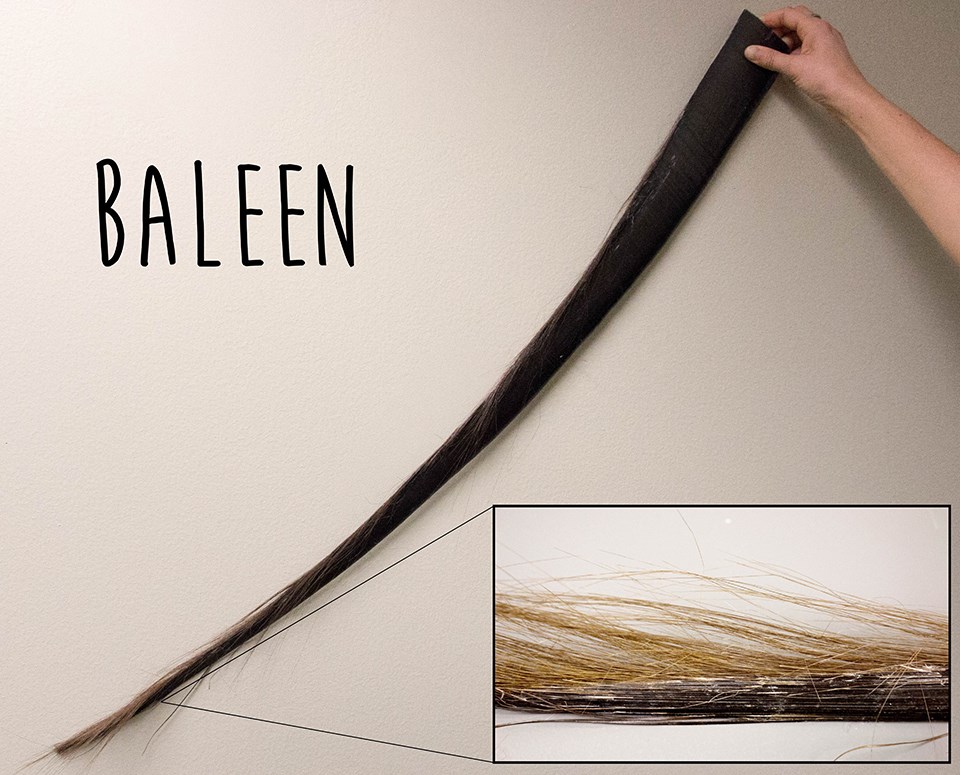Last updated: June 16, 2020
Article
#Sciencedeskdigs: Baleen

NPS Photo/M.Reed
What is it?
It’s baleen from a bowhead whale. Baleen are essentially filters in a whale’s mouth that are made up of keratin (the same protein our hair and fingernails are made of). Instead of teeth, baleen whales use these unique plates to filter small fish and krill from the water. The bowhead whale has some of the longest baleen, with some pieces measuring over 10 feet long. Scientists use baleen to learn more about bowhead whales, including their age. In the past, whalers used to harvest baleen for many products including women's corsets, eyeglasses, and fishing rod tips, to name a few. Due to its flexible but strong nature, people used baleen similar to how we use plastic today.
While all marine mammals are protected under the Marine Mammal Protection Act, Native Alaskans continue to legally subsistence hunt bowhead whales. This portion of baleen came from a subsistence hunt and is signed by the whaling captain, legally sold as an Authentic Native Handicraft.
Describe your workspace in one word:
Anomalous. With a marine wildlife focus, my desk is covered in marine wildlife books,which is quite different than what one would expect in landlocked Colorado
